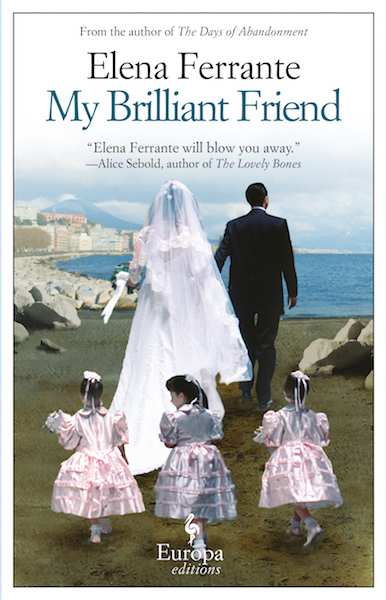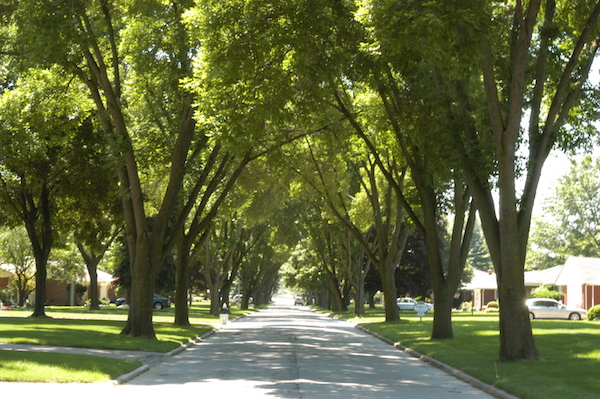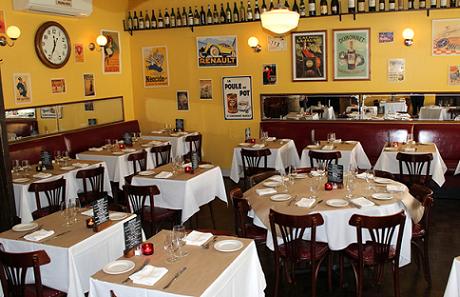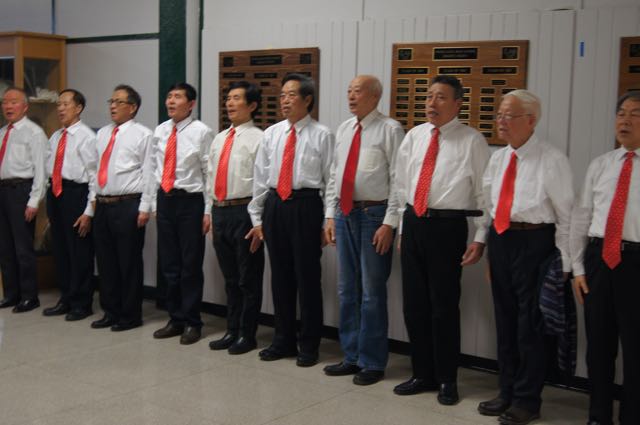Two Literary Events: Elena Ferrante's Publisher and Abigail Pogrebin at Scarsdale Library
- Details
- Written by Joanne Wallenstein
- Hits: 4022
 Sign up now for two literary events taking place in March at the Scarsdale Library:
Sign up now for two literary events taking place in March at the Scarsdale Library:
Michael Reynolds from Europa Editions
Do you wonder about the real identity of the author of "My Brilliant Friend" and the three subsequent books in the Neapolitan series credited to Elena Ferrante? Here's your chance to find out. On Monday, March 13, 2017, Ferrante's publisher Michael Reynolds will visit the Scarsdale Library. He is the Editor-in-Chief of Europa Editions, the independent publishing company known best for the widely popular Elena Ferrante Neapolitan series. Reynolds was born in Australia and now lives in New York. He has been with Europa Editions since its founding in 2005, when its main office was located in Rome. He and his immediate family are bilingual English and Italian speakers.
His session titled, "Talents and Trends Inside Fiction Publishing" will be held on Monday March 13 from 1 to 3 p.m. at the Scarsdale Public Library and is hosted by the Scarsdale Adult School.
Over the years, Reynolds has held many different jobs: gold miner, maze groundskeeper, barman, windsurfing instructor, guinea pig for sleep deprivation experiments, poetry teacher, English teacher, gardener, builder, translator, director of a writer's festival, director of a literary magazine, and author of three books. Yet he has stated that his current job at Europa Editions has been the most fun of all, where his mission is to find fiction books from abroad that can also fare well in the United States, regardless of whether the works are written or available in English.
of a writer's festival, director of a literary magazine, and author of three books. Yet he has stated that his current job at Europa Editions has been the most fun of all, where his mission is to find fiction books from abroad that can also fare well in the United States, regardless of whether the works are written or available in English.
The Europa catalog is eclectic, reflecting the founders' belief that dialogue between nations and cultures is of vital importance and that this exchange is facilitated by literature chosen not only for its ability to entertain and fascinate but also to inform and enlighten. In this SAS special event class entitled "Talents and Trends Inside Fiction Publishing," Reynolds will share his perspectives on trends in the publishing industry, up and coming new authors, soon to be published titles, and more.
Register at www.ScarsdaleAdultSchool.org; tuition is $20.
The Modern Day Meaning of the Jewish Holidays
Author Abigail Pogrebin will speak about her new  book, "My Jewish Year: 18 Holidays, One Wondering Jew" at Scarsdale Public Library on Thursday, March 16, at 7:30pm. "My Jewish Year" chronicles Pogrebin's experience researching and observing every holiday in the Jewish calendar. Released this month, it's a poignant, funny, and thoughtful take on finding modern-day meaning in ancient rituals. Combining a treasure trove of information with personal anecdotes, Pogrebin's spiritual journey is moving and inspiring.
book, "My Jewish Year: 18 Holidays, One Wondering Jew" at Scarsdale Public Library on Thursday, March 16, at 7:30pm. "My Jewish Year" chronicles Pogrebin's experience researching and observing every holiday in the Jewish calendar. Released this month, it's a poignant, funny, and thoughtful take on finding modern-day meaning in ancient rituals. Combining a treasure trove of information with personal anecdotes, Pogrebin's spiritual journey is moving and inspiring.
Abigail Pogrebin also wrote "Stars of David: Prominent Jews Talk about Being Jewish" and "One and the Same." Previously, she was an Emmy-nominated producer for shows including Charlie Rose and 60 Minutes. Currently, she moderates a blockbuster interview series at the JCC in Manhattan called "What's Everyone Talking About," with such guests as Malcolm Gladwell, Nicholas Kristof and Mario Batali. She is also the President of Central Synagogue.
"We are looking forward to having Abigail Pogrebin share her unique experience at the library," said Library Director Beth Bermel. "I think that the insight she gained while pursuing a  greater knowledge and understanding of the Jewish faith is one that will be of great interest to our community."
greater knowledge and understanding of the Jewish faith is one that will be of great interest to our community."
This program is free and open to the public, but registration is required as space is limited. Copies of "My Jewish Year" will be available for purchase and signing. To register, visit scarsdalelibrary.org, or call the Reference Desk at 914-722-1302.
Your Letters: In Support of Dan Hochvert for Mayor and Understanding the Financing of Capital Projects
- Details
- Written by Joanne Wallenstein
- Hits: 4476
 To the Editor: I wanted to take a moment to talk about why I am proud to be volunteering in support of the Scarsdale Citizens' Non-Partisan Party slate. In particular, I would like to share some of my personal experiences with Dan Hochvert, candidate for Village Mayor.
To the Editor: I wanted to take a moment to talk about why I am proud to be volunteering in support of the Scarsdale Citizens' Non-Partisan Party slate. In particular, I would like to share some of my personal experiences with Dan Hochvert, candidate for Village Mayor.
In 2015, our family had just bought our house. The kids were not in school yet, so I didn't have much of a network of local friends. I received an invitation from a neighbor to attend a Scarsdale Forum event, and there I was introduced to Dan Hochvert. I did not know at the time that Dan was a former two-term Trustee, Chair of the Planning Board, and Chair of the Forum's Education Committee.
All I knew was that Dan was friendly, knowledgeable, and welcoming. Alongside other topics, I mentioned to him that I was curious about whether there was an old water well on my property. Dan, (a former engineer by profession which I also did not know at the time) offered to follow up with some helpful information.
That week I heard from Dan. Was there a time he could drop off some materials? Well, sure come by on Saturday. Dan showed up with a copy of the Scarsdale Comprehensive Plan, a booklet of historic homes, and an original sewer and waterline map from 1905. Dan helped me find my property on the map, explained the legends, and offered to let me temporarily keep the map on one condition: that I would show it to other people so that the history of Scarsdale would be more widely shared and appreciated. I held up my end of the bargain and returned the map to Dan perhaps a little later than he might have preferred. It really was a marvel and I loved having it.
A few months later I had started reading about trees in Scarsdale, how they are classified and protected, and I wondered about the history on the issue. By that time I knew that Dan had just finished his term as Chair of the Planning Board, so I asked if he would mind coming by for a coffee to discuss the "tree issue." Dan arrived at the scheduled time with a thick binder in his hands. It was the Village Code. His personal copy that he printed to make sure his notes and tabs were easily accessible for any work necessary for his duties on the Planning Board. Dan sat with my husband and me for about 45 minutes perusing the three main sections of code having to do with trees, providing a bit of history on how the code was revised over time, and what his thoughts were about how it might someday be improved.
I think it is important that people know these stories so that they understand not only how deeply knowledgeable Dan is about the Village, but also how generous Dan is with his time - and not just to old friends, but to a "nobody" like me who had just moved to town. I want Dan to know, I will never forget his kindness and hospitality making my family and I feel welcome and supported as new residents here in town, and how appreciative I am of his encouragement of my own involvement and volunteerism in the Village.
I support the Scarsdale Citizens' Non-Partisan slate because it is the only party to endorse candidates based on their character, experience, and temperament. I think the national political landscape has shown us that experience and temperament matter. I support a party that nominates people - not politics.
Not only did Dan earn the support of the CNC, but he earned my vote too. Thank you, Dan, for volunteering to serve!
ML Perlman
Carstensen Road
Dear Editor,
The candidates of the Voters Choice Party seem to have a poor understanding of financing of capital projects verses annual maintenance. While our roads may not be in great shape (but they are improving), road maintenance needs to paid out of the current budget. If we bonded it, I am sure the repaired roads would in horrible condition when the bond is finally paid off. Roads don't seem to last more than 5-10 years from what I see. Bonds also are expensive to issue and are not efficient for short term maintenance heavy infrastructure called roads. We are better served paying annually for roads, which in the long term would be cheaper than going to Wall St to finance. Bonds make sense for infrastructure that has a lifetime longer than the bond. Examples would be bridges or buildings that future residents (who will be paying for the bonds) will be using when they move into town. We should not make future residents pay for what we use today.
This basic misunderstanding of public funding should give everyone serious pause and is another reason to support the candidates of the Scarsdale Citizens' Non-Partisan Party, who actually showed up at Village budget meetings to understand the hard choices the Mayor and Trustees need to make every year.
Talk is cheap, and uninformed talk is dangerous. Vote for the Scarsdale Citizens' Non-Partisan Party candidates March 21 at the library.
Bruce Wells
40 Chase Road
Edgemont Mourns 2011 Grad Catherine Johannet
- Details
- Written by Joanne Wallenstein
- Hits: 8031
 Catherine Johannet, a 23 year-old 2011 graduate of Edgemont High School was found dead on Bastimentos Island off the northern coast of Panama on Sunday February 5th. Her body was recovered on a wooded trail near a beach. Panamanian authorities are working with the FBI to investigate and have not yet released the cause of her death.
Catherine Johannet, a 23 year-old 2011 graduate of Edgemont High School was found dead on Bastimentos Island off the northern coast of Panama on Sunday February 5th. Her body was recovered on a wooded trail near a beach. Panamanian authorities are working with the FBI to investigate and have not yet released the cause of her death.
Johannet had been staying on Colon Island, also part of an archipelago called Bocas del Toro. She was last seen on Thursday February 2 on Colon Island and was reported missing by the hostel where she was staying.
A 2015 graduate of Columbia University with a degree in comparative literature, Johannet worked as an English teacher in Vietnam until October 2016.
Her family flew to Panama to search for her and handed out missing posters around Bastimentos Island.
Her older sister Laura Johannet shared the sad news on Facebook on Sunday night, saying "Unfortunately we have learned today that she has passed away," Laura wrote Sunday night. "My family is thinking of all our beautiful memories with our laughing, adventurous, warm little girl. She was always there to listen to you and just enjoy life with her loved ones. We will keep you posted on funeral plans."
Over 500 People Celebrate the Year of the Rooster
- Details
- Written by Joanne Wallenstein
- Hits: 4224
 So many people bought tickets to the Scarsdale Chinese Association 2017 Spring Festival, celebrating the Year of the Rooster, that the event had to be moved from the Scarsdale Congregational Church – where it was held last year – to Woodlands High School in Greenburgh. In fact, organizers estimate that 550 people in all attended the event on Saturday February 11, 2017.
So many people bought tickets to the Scarsdale Chinese Association 2017 Spring Festival, celebrating the Year of the Rooster, that the event had to be moved from the Scarsdale Congregational Church – where it was held last year – to Woodlands High School in Greenburgh. In fact, organizers estimate that 550 people in all attended the event on Saturday February 11, 2017.
Xue Su, the Chair of the Scarsdale Chinese Association spearheaded the day. The association began 12 years ago with only 25 families and has now grown to 250 families.
Guests were served delicious homemade Chinese foods as well as special delicacies ordered from Queens including noodles, fried rice, dumplings and scallion pancakes. Along with the fare were tables where kids could make Chinese lanterns, have their faces painted and solve riddles.
The auditorium featured 18 performances by children, parents and grandparents led by the traditional lion parade and dance. There was bel canto, pop-style, and Chinese opera singing as well as dancing, including ballet, a Spanish bull dance and Chinese traditional dance. A Qibao (Chinese dress) fashion show gave participants a chance to show off their beautiful Chinese costumes. Also on the program was a Kung Fu martial arts demonstration and karaoke.
The event drew candidates for Scarsdale Village Mayor and Trustee. We spotted Dan Hochvert and Carl Finger from the Scarsdale Citizens Non-Partisan Party and Bob Berg and Bob Selvaggio from the Scarsdale Voters' Choice Party. All will be on the ballot for the March 21 election.
Jing Lu, the former Chair of the SCA said, "While such an event entails many hours of many volunteers' devotion, people also cherish this opportunity to have fun together and work toward a common good."
Photos by BK Munguia and Joanne Wallenstein
Enjoy Many Encores at Encore Bistro Francais
- Details
- Written by Judie Dweck
- Hits: 6870
 Many restaurants share the word bistro in their title, which generally evokes a small dining spot serving moderately priced simple meals in an unpretentious setting. In Westchester we see Asian, American and Latin bistros, but it is the classic welcoming Encore Bistro Francais, in Larchmont, that has me returning to savor many encores of the casual homestyle cooking of France.
Many restaurants share the word bistro in their title, which generally evokes a small dining spot serving moderately priced simple meals in an unpretentious setting. In Westchester we see Asian, American and Latin bistros, but it is the classic welcoming Encore Bistro Francais, in Larchmont, that has me returning to savor many encores of the casual homestyle cooking of France.
The owner and host David Masliah grew up in Lyon. His uncle owned a restaurant and the young Masliah was fascinated with this culinary atmosphere. He went on to attend culinary school in France and arrived in the United States in 1994, where he honed his skills at the venerable La Panetiere for four years. He then opened a restaurant in Weston, Connecticut and in 2000 he opened his intimate and friendly Encore Bistro Francais in Larchmont. "In addition to the food, ambiance and atmosphere are important for success. At Encore, I stay true to my roots by offering the classics. Our menu has evolved through the years and we try to accommodate all of our guests. The best part of my work is that it never gets boring. If I were hosting a small dinner party at Encore, as I have done in the past, my guests might include many of my friends in the culinary field as well as my wine suppliers. I believe that our longevity in the restaurant business depends upon consistency. We have used the same suppliers for our top quality ingredients forever, and our chef Erwin Perez has been with us since we opened. He is always eager to learn, and watching him work in the kitchen is observing a chef who is truly passionate about his craft."
A tin ceiling, vintage French posters red banquettes, yellow walls, dark woods and mirrors set the scene. The front windows are frosted for privacy. The acoustic ceiling tones down the noise level during busy evenings. French newsprint lines the bread basket on the butcher paper topped tables. The main dining room is cozy and seats about 75. The recently added dining room seats an additional 30 guests and can serve as a private party venue. Weather permitting, you can dine outdoors on Chatsworth Avenue for a true Parisian experience.
A delightful bit of variety arrives when you dine mid week. In addition to the menu, Monday night offers crepe night with interesting varieties such as crepe marocaine with chicken, artichokes and harissa or crepe provencale with seafood. Tuesday is mussel night with several preparations and Wednesday is melted cheese night with fondue, raclette and tartiflette. The lunch menu boasts classic quiche, and croque monsieur or madame. This family friendly spot even has a kids menu. There are daily entrée, appetizer and wine specials.
In addition to the menu, Monday night offers crepe night with interesting varieties such as crepe marocaine with chicken, artichokes and harissa or crepe provencale with seafood. Tuesday is mussel night with several preparations and Wednesday is melted cheese night with fondue, raclette and tartiflette. The lunch menu boasts classic quiche, and croque monsieur or madame. This family friendly spot even has a kids menu. There are daily entrée, appetizer and wine specials.
My sampling was a varied selection of classics. Steak frites, onion soup, cassoulet and trout are very popular at Encore. I decided to try dishes I had not tasted here before. I was brought back to childhood with an appetizer of oven roasted marrow bones. As a child, we enjoyed marrow bones in soup at home. At Encore, the bones were sliced horizontally to expose the olive oil, parsley and garlic scented marrow. The three bones were accompanied by an onion marmalade... very good indeed. On a lighter note, we continued with tartare de thon. Capers, shallots, anchovies, fresh herbs and a touch of sesame oil resulted in a flavorful light starter. Back to a classic, we savored a few succulent escargots presented on a cast iron snail dish. Parsley, garlic and butter did not overwhelm these morsels. New to the menu was a hearty dish of grilled octopus. It was carefully sliced and reassembled. Several varieties of beans combined in a ragout to share the plate. Roasted garlic sauce completed this plentiful plate. A classic from Lyon, quenelles Lyonnaise followed. These melt in your mouth codfish dumplings arrived set in a lobster bisque sauce in a gratin dish. A parmesan crisp topped it. These quenelles were a variation of the ones I have enjoyed in the past, prepared with pike. The richness and creaminess of this dish was elegant. Many salads, with Salade Pariesienne being very popular are other possible starters. Entrees of meat and fish are varied here. From, the fish choices, we loved Encore's rendition of Saint Jacques au Beurre Blanc. The large sea scallops had a parmesan crust and rested on a leek fondue with a glorious lemon, white wine and butter sauce. Mashed potatoes, broccoli and stuffed mushroom cap completed the plate . Indulging in these rich French classics is a special treat. Bouillabaisse, sole en papillote are waiting to be tried. Among the meats, steak frites and grilled hanger steak have been my favorites with a variety of sauces and a mountain of crisp fries. On my most recent visit, I opted for sautéed sweetbreads. The whole grain mustard sauce complemented the crispy ris de veau. They were hearty and so tasty. Yet to be tried are rack of lamb, duck a l'orange and the famous cassoulet, a crock pot filled with sausage, smoked bacon, duck confit and white beans.
Entrees of meat and fish are varied here. From, the fish choices, we loved Encore's rendition of Saint Jacques au Beurre Blanc. The large sea scallops had a parmesan crust and rested on a leek fondue with a glorious lemon, white wine and butter sauce. Mashed potatoes, broccoli and stuffed mushroom cap completed the plate . Indulging in these rich French classics is a special treat. Bouillabaisse, sole en papillote are waiting to be tried. Among the meats, steak frites and grilled hanger steak have been my favorites with a variety of sauces and a mountain of crisp fries. On my most recent visit, I opted for sautéed sweetbreads. The whole grain mustard sauce complemented the crispy ris de veau. They were hearty and so tasty. Yet to be tried are rack of lamb, duck a l'orange and the famous cassoulet, a crock pot filled with sausage, smoked bacon, duck confit and white beans.
For dessert, I couldn't resist the lemon tart. Like everything else at Encore, it was a generous individual tart with raspberry coulis and topped with chocolate lettering announcing its tart citron filling. It was refreshing and very lemony and offset our rich entrees. Of course crepes suzettes with freshly grated orange zest was also a perfect end to our meal. Poached pear belle Helene and crème brulee are on our list for future meals at Encore.
Enjoy a first time at Encore Bistro Francais and follow up with many encore visits.
Encore Bistro Francais
22 Chatsworth Avenue
Larchmont, NY
(914) 833-1661
Recipe: Tartare de Thon (Serves 4)
16 ounces sushi grade tuna (in ¼ inch cubes}
1 tsp. chopped capers
3 dried anchovies mashed
1 shallot, minced
Juice of 1 lemon
4 tsps. sesame oil
Salt and pepper, to taste
Fresh herbs, to taste
In a non-reactive bowl, mix the tuna with the capers, anchovies and shallots. Just before serving toss in the remaining ingredients.






















